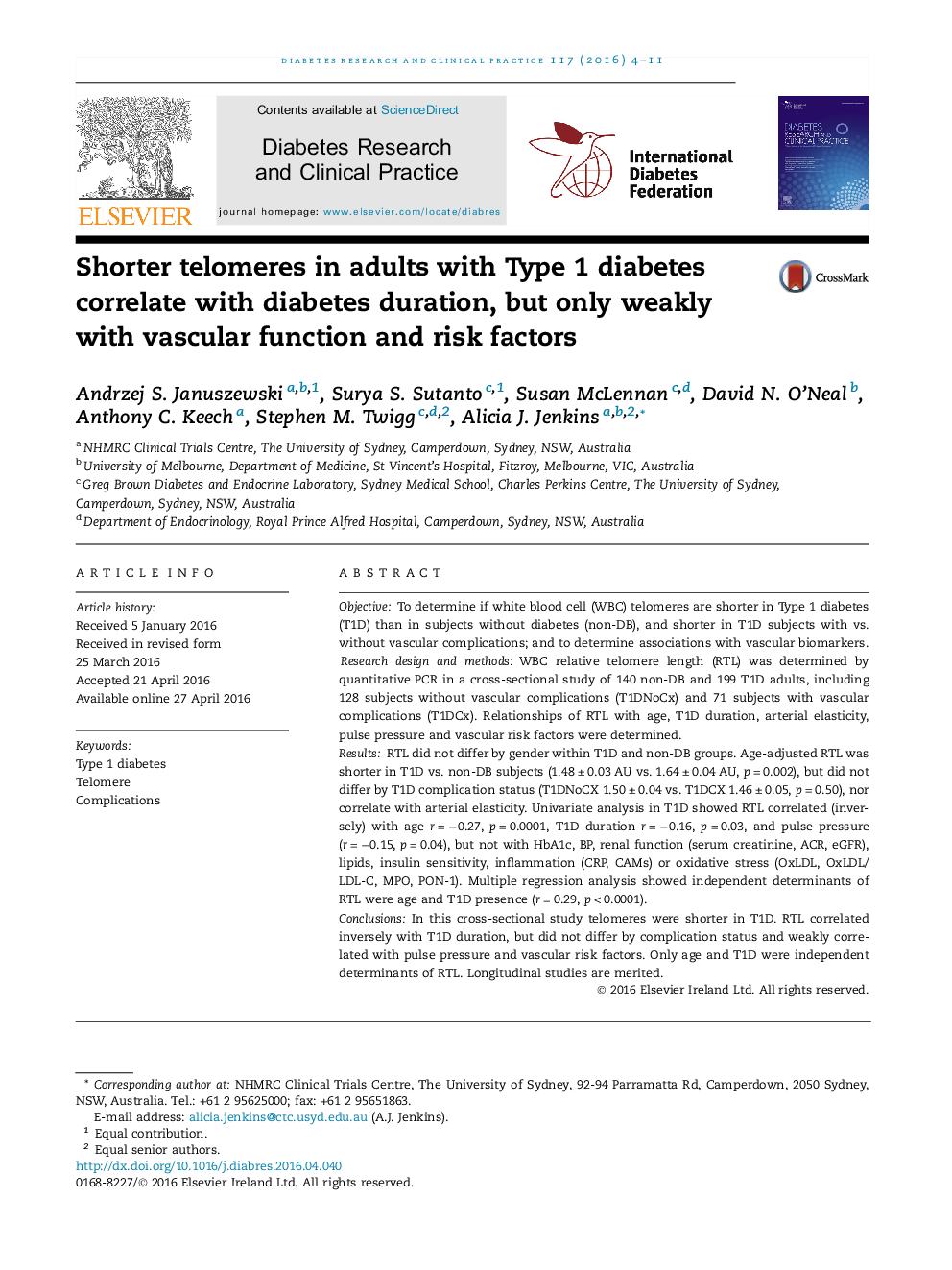| Article ID | Journal | Published Year | Pages | File Type |
|---|---|---|---|---|
| 5898734 | Diabetes Research and Clinical Practice | 2016 | 8 Pages |
â¢Cross-sectional study of telomeres in Type 1 diabetes and non-diabetic subjects.â¢Shorter telomeres in T1D vs. non-diabetic subjects.â¢Relative telomere length (RTL) do not correlate with HbA1c, oxidation or smoking.â¢RTL correlates inversely with age, T1D duration, inflammation and vascular function.
ObjectiveTo determine if white blood cell (WBC) telomeres are shorter in Type 1 diabetes (T1D) than in subjects without diabetes (non-DB), and shorter in T1D subjects with vs. without vascular complications; and to determine associations with vascular biomarkers.Research design and methodsWBC relative telomere length (RTL) was determined by quantitative PCR in a cross-sectional study of 140 non-DB and 199 T1D adults, including 128 subjects without vascular complications (T1DNoCx) and 71 subjects with vascular complications (T1DCx). Relationships of RTL with age, T1D duration, arterial elasticity, pulse pressure and vascular risk factors were determined.ResultsRTL did not differ by gender within T1D and non-DB groups. Age-adjusted RTL was shorter in T1D vs. non-DB subjects (1.48 ± 0.03 AU vs. 1.64 ± 0.04 AU, p = 0.002), but did not differ by T1D complication status (T1DNoCX 1.50 ± 0.04 vs. T1DCX 1.46 ± 0.05, p = 0.50), nor correlate with arterial elasticity. Univariate analysis in T1D showed RTL correlated (inversely) with age r = â0.27, p = 0.0001, T1D duration r = â0.16, p = 0.03, and pulse pressure (r = â0.15, p = 0.04), but not with HbA1c, BP, renal function (serum creatinine, ACR, eGFR), lipids, insulin sensitivity, inflammation (CRP, CAMs) or oxidative stress (OxLDL, OxLDL/LDL-C, MPO, PON-1). Multiple regression analysis showed independent determinants of RTL were age and T1D presence (r = 0.29, p < 0.0001).ConclusionsIn this cross-sectional study telomeres were shorter in T1D. RTL correlated inversely with T1D duration, but did not differ by complication status and weakly correlated with pulse pressure and vascular risk factors. Only age and T1D were independent determinants of RTL. Longitudinal studies are merited.
